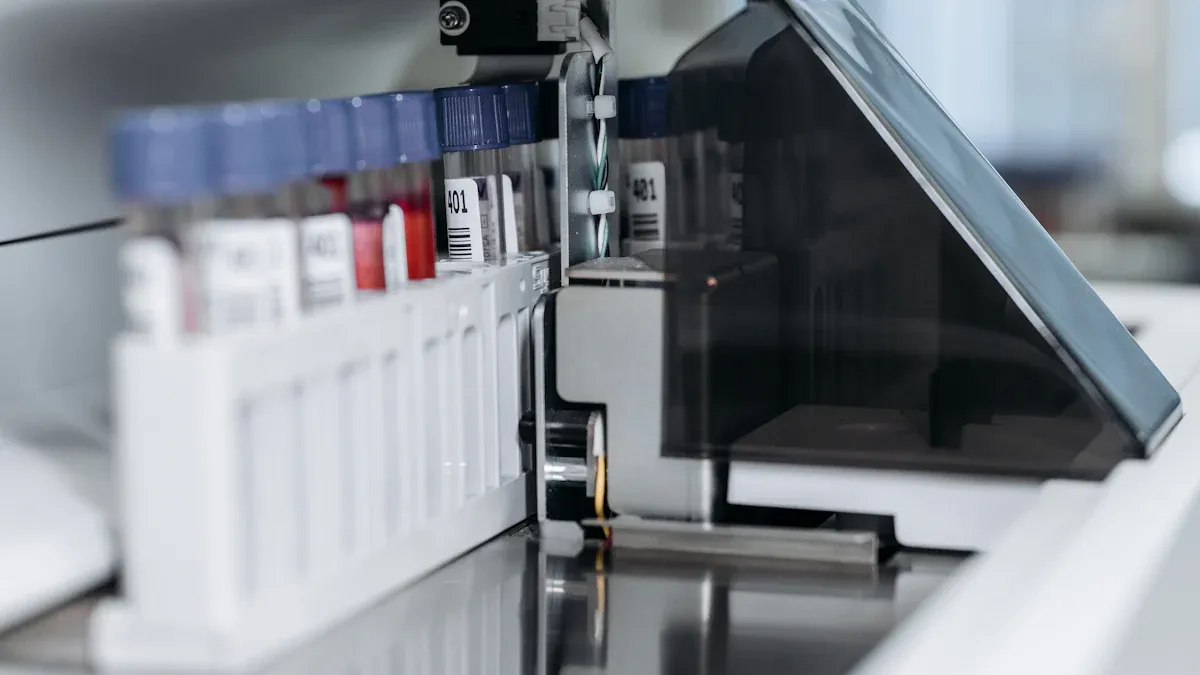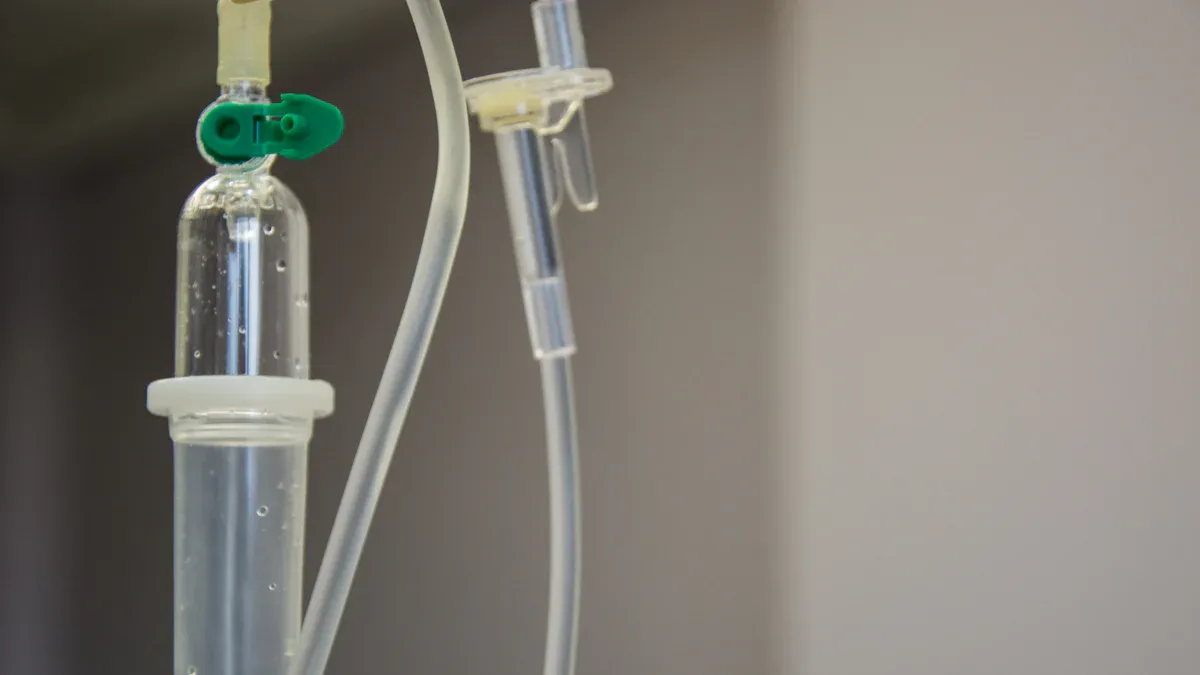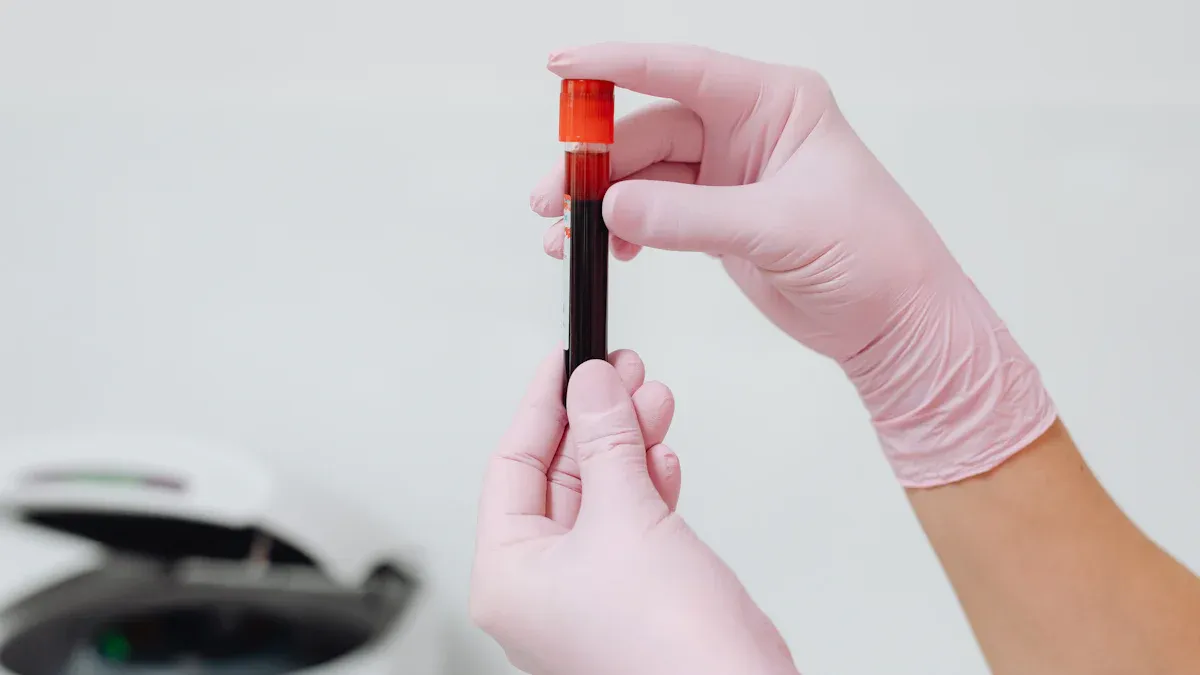What Is 3 to 1 Radial Shrink PET Tubing and How Is It Used in Medical Devices

3:1 radial shrink pet tubing: 50% faster shrink for medical devices uses a special PET material. This material shrinks to one-third its size when heated. The "3:1" shrink ratio means the tubing can fit over big or odd shapes. Then it shrinks tightly around them. Many medical devices use pet heat shrink tubing for insulation, protection, and extra strength. Medical professionals pick pet heat shrink tubing because it works fast and fits well. Medical engineers use pet heat shrink tubing and heat shrink tubing in catheter assembly. They also use it in other medical projects. Pet heat shrink tubing helps protect delicate parts inside medical devices.
Medical teams trust 3:1 radial shrink pet tubing: 50% faster shrink for medical devices to make devices safer and more reliable.
Pet heat shrink tubing and regular heat shrink tubing both help medical devices work well.
Key Takeaways
3:1 radial shrink PET tubing gets three times smaller in width. It fits tightly over big and bumpy parts in medical devices.
This tubing shrinks 50% faster than normal tubing. It saves time and keeps delicate device parts safe when putting them together.
PET tubing gives strong electrical insulation and resists chemicals. It has thin walls, so devices are safer, smaller, and more comfortable.
It protects and strengthens medical devices by blocking dust, water, and damage. It also keeps devices flexible and easy to use.
People use it for catheter assembly, wire insulation, and bundling. It helps medical devices last longer and work better.
3:1 Radial Shrink PET Tubing: 50% Faster Shrink for Medical Devices

Shrink Ratio Explained
When you heat pet heat shrink tubing with a 3:1 shrink ratio, it gets three times smaller in diameter. This makes it very helpful when making medical devices. Medical devices often have parts that are not the same size or shape. The 3:1 ratio lets the tubing go over big connectors and then shrink to fit small wires or tubes. This makes the tubing fit tightly and safely, which is important for how well the device works.
Pet heat shrink tubing with a 3:1 shrink ratio can cover both large and small parts at once. A 2:1 ratio works best for parts that are the same shape, but 3:1 radial shrink pet tubing: 50% faster shrink for medical devices is better for tricky or uneven parts.
To pick the right pet heat shrink tubing, engineers do a few things:
They measure the biggest part they need to cover.
They measure the smallest part the tubing must fit.
They choose tubing that is about 25% bigger than the largest part.
They check that the tubing can shrink smaller than the smallest part.
This is why 3:1 radial shrink pet tubing: 50% faster shrink for medical devices is a favorite for making medical devices.
Fast Shrink Benefits
Pet heat shrink tubing with a 3:1 ratio does more than fit many shapes. It also shrinks 50% faster than regular tubing. This helps save time when making medical devices. Workers can finish putting devices together more quickly. Fast shrinking means less heat touches the device parts, so they are safer from harm.
Pet heat shrink tubing makes a tight seal quickly.
The fast shrinking helps stop mistakes during assembly.
Medical teams can make more devices in the same time.
3:1 radial shrink pet tubing: 50% faster shrink for medical devices helps companies make better and faster products. Pet heat shrink tubing also saves money by making assembly easier. Tubing that shrinks quickly helps make safer and stronger medical devices. Pet heat shrink tubing is still very important for making many kinds of medical devices.
PET Properties
Electrical Insulation
PET heat shrink tubing gives strong electrical insulation for medical devices. It has high dielectric strength, so electricity does not jump between wires or parts. This stops short circuits and keeps patients and workers safe. Medical engineers use heat shrink tubing to cover wires in catheters and monitors. The tubing acts like a shield and blocks electric shocks. This makes devices safer to use. PET heat shrink tubing also stops arcing, which can hurt electronics. Hospitals trust this tubing because it keeps devices working well, even during long surgeries.
PET heat shrink tubing is great at keeping electrical parts safe and apart. This is why many medical device makers pick it for insulation.
Ultrathin Walls
PET heat shrink tubing can have very thin walls but still stay strong. Some tubing is as thin as 0.0005 inches for a 0.1-inch diameter. This gives more space inside catheters and other small devices. Doctors and nurses can use smaller tools that are still stiff and strong. The thin walls help keep devices flexible and easy to move in the body. At the same time, the tubing adds support and stops bending or breaking. Thin wall heat shrink tubing helps make medical devices smaller and more comfortable for patients.
PET heat shrink tubing lets engineers design more types of devices.
Devices can be made smaller but still work well.
Tubing stays stiff, even when it is very thin.
Chemical Resistance
PET heat shrink tubing stands up to many chemicals in hospitals and labs. It does not break down from cleaning agents, solvents, or body fluids. This keeps the tubing safe during use. Medical teams can clean and reuse devices with heat shrink tubing. The tubing works with different sterilization methods, like autoclaving, gamma irradiation, and ethylene oxide. PET heat shrink tubing keeps its shape and strength after many cleanings.
Property | Description relevant to medical tubing |
|---|---|
Clarity and Transparency | Very clear and see-through, which helps doctors check inside the tubing |
Chemical Resistance | Stands up to many chemicals but not alkalis, so it lasts against fluids and cleaners |
Tensile Strength | High tensile strength (55–75 MPa) means it is tough and hard to break |
Rigidity and Toughness | Semi-rigid and tough, so the tubing does not bend or break easily |
Barrier Properties | Blocks moisture and gases, so fluids inside stay safe and clean |
Water Absorption | Absorbs very little water (less than 0.8%), so it does not swell or break down |
Safe for use with human tissue and fluids | |
Sterilizability | Can be sterilized, which is important for medical safety |
Recyclability | Easy to recycle, which helps the environment |
Polymer Blending | Can mix with other polymers to make it tougher or more resistant to chemicals |
PET heat shrink tubing also meets strict medical rules. It passes tests for biocompatibility, so it is safe for people. The tubing keeps working after many times being cleaned and sterilized. This is important for hospitals and clinics. PET heat shrink tubing is strong, clear, and not too expensive. It is tougher than PVC or elastomer tubing and costs less than fluoropolymer tubing. Medical device makers use PET heat shrink tubing because it is safe, reliable, and easy to use.
Note: PET heat shrink tubing keeps working well after many sterilizations, so it is a smart pick for reusable medical devices.
Advantages for Medical Devices
Protection and Reinforcement
Pet heat shrink tubing helps protect medical devices. It covers wires, connectors, and other parts. This layer blocks dust, water, and chemicals. Many hospitals use it to stop damage from drops or bumps. The tubing also makes weak spots stronger. Engineers wrap pet heat shrink tubing around bends or joints. This extra layer helps stop cracks or breaks. Hospitals trust this tubing to keep equipment safe during use and cleaning.
Tip: Pet heat shrink tubing keeps delicate parts safe from harm.
Some devices need more strength in certain places. Pet heat shrink tubing adds stiffness but does not make devices bulky. This helps medical devices last longer. The tubing holds parts in place and stops wires from moving. Many medical workers use heat shrink tubing because it protects and reinforces at the same time.
Flexibility and Comfort
Pet heat shrink tubing keeps devices small and easy to hold. The tubing is thin, so it does not add much size. Doctors and nurses can use tools with more comfort. Heat shrink tubing bends easily but stays strong. This helps devices move with the body. Patients feel less pain when devices use pet heat shrink tubing.
Many catheters and probes must fit into tight spaces. Heat shrink tubing lets engineers design slim devices. The tubing does not block movement. Medical teams like pet heat shrink tubing for its soft and smooth surface. This makes devices safer and more comfortable for patients.
Pet heat shrink tubing helps devices stay flexible.
The tubing makes devices more comfortable for patients and staff.
Devices stay small and simple to use.
Durability
Pet heat shrink tubing stands up to hard use in hospitals. The tubing does not wear out from daily handling. Many medical devices must last through many uses and cleanings. Heat shrink tubing keeps its shape and strength after being cleaned many times. This means devices can be used again and again.
Heat shrink tubing also resists chemicals and fluids. Pet heat shrink tubing does not break down from cleaners or body fluids. This helps medical teams trust their devices every time. The tubing keeps wires and parts safe inside. Devices with pet heat shrink tubing often last longer than others.
Feature | Benefit for Medical Devices |
|---|---|
Chemical Resistance | Handles strong cleaners |
High Strength | Stops cracks and breaks |
Flexibility | Makes movement easy |
Thin Walls | Keeps device size small |
Reusability | Lasts through many cleanings |
Pet heat shrink tubing and heat shrink tubing both help make medical devices last longer. Hospitals and clinics depend on these materials to keep equipment working well. The tubing helps lower repair costs and downtime.
Applications in Medical Devices

Catheter Assembly
Catheter assembly is a main use for PET heat shrink tubing. Engineers use this tubing to connect catheter parts. The tubing goes over the joints and seals them tight. This helps stop leaks and keeps catheters strong. Many medical devices use this method for flexibility and strength. PET tubing also helps shape the catheter tip. The tubing makes the tip smooth and safe for patients. Hospitals use this process to make catheters that work well for many procedures.
Note: PET heat shrink tubing helps catheters stay safe and comfy for patients.
Wire Insulation
Wire insulation is another big use for PET heat shrink tubing. Medical devices have thin wires that need to be safe. The tubing covers these wires and keeps out water and chemicals. It also protects wires from getting damaged. This insulation stops short circuits and keeps devices working right. Many medical teams use PET tubing to keep wires safe in monitors and pumps. The tubing is thin, so devices can stay small but safe.
PET tubing keeps wires safe in lots of medical devices.
Insulated wires help devices last longer and work better.
Bundling and Strain Relief
Bundling and strain relief are important in medical devices. PET heat shrink tubing holds wires or tubes together. This keeps the inside of devices neat and tidy. It also makes fixing and checking devices easier. Strain relief stops wires and connectors from being pulled or bent. The tubing takes in stress and stops damage at weak spots. Many engineers use PET tubing to make devices last longer.
Application | Benefit for Medical Devices |
|---|---|
Bundling | Keeps wires organized |
Strain Relief | Reduces risk of wire damage |
Protective Covering | Shields parts from harm |
Medical devices get many benefits from PET heat shrink tubing. The tubing gives protection, support, and keeps things organized. Hospitals and clinics count on these features to keep devices safe and working well.
3:1 radial shrink pet tubing: 50% faster shrink for medical devices has many good points for healthcare workers. This tubing stands up to heat, cold, and strong chemicals. It keeps wires safe and helps protect patients. Healthcare workers like it because it lasts a long time and means fewer repairs. Medical device makers pick this tubing because it is simple to use and has strong insulation. These things help make medical tools safer and more dependable.
Great at handling hot and cold
Strong at stopping electricity from passing through
Stays safe around harsh chemicals
Bends easily and is simple to use
Lasts a long time and stays tough
FAQ
What does the 3:1 shrink ratio mean?
The 3:1 shrink ratio means the tubing gets three times smaller across when heated. This lets the tubing go over big or odd-shaped parts first. Then it shrinks tightly to fit around them.
Can 3:1 radial shrink pet tubing: 50% faster shrink for medical devices be sterilized?
Yes, you can sterilize this tubing with common ways like autoclaving, gamma irradiation, or ethylene oxide. The tubing stays strong and keeps its shape after being cleaned many times.
Why do medical engineers choose PET heat shrink tubing?
Medical engineers pick PET heat shrink tubing because it insulates well, resists chemicals, and has very thin walls. These features help keep wires and parts safe inside medical devices.
Is PET heat shrink tubing safe for patients?
PET heat shrink tubing passes tough safety tests for use with people. It is safe for human tissue and fluids. Hospitals trust it for many types of medical devices.
What are some common uses for this tubing in hospitals?
Hospitals use 3:1 radial shrink pet tubing: 50% faster shrink for medical devices for catheter assembly, wire insulation, and bundling. It also gives strain relief and protects delicate parts.
See Also
The Importance Of Ultra-Thin PET Tubing In Medical Use
Primary Uses Of Ultrathin PET Heat Shrink Tubing In Medicine
Selecting The Ideal FEP Shrink Tubing For Class III Devices

